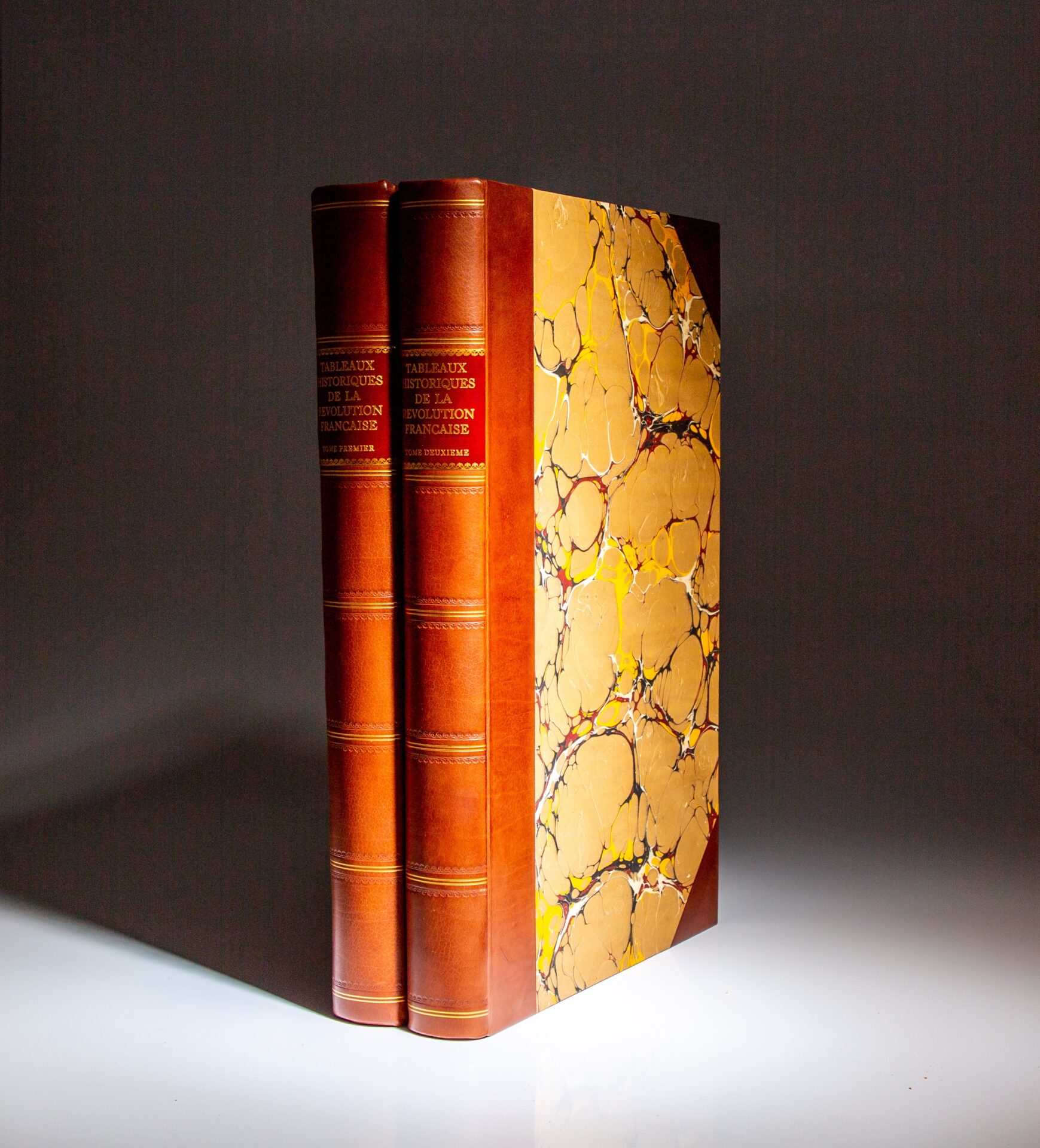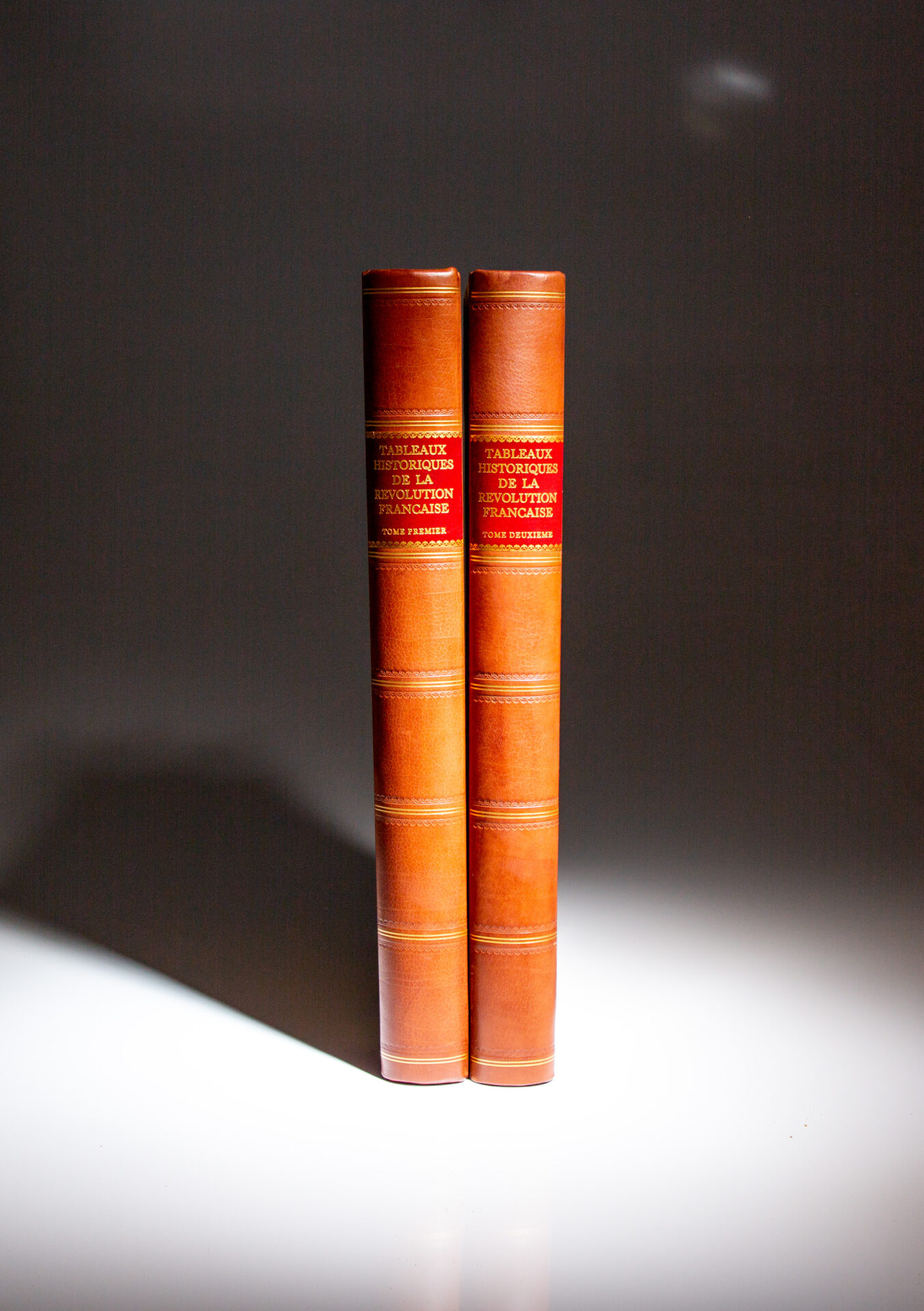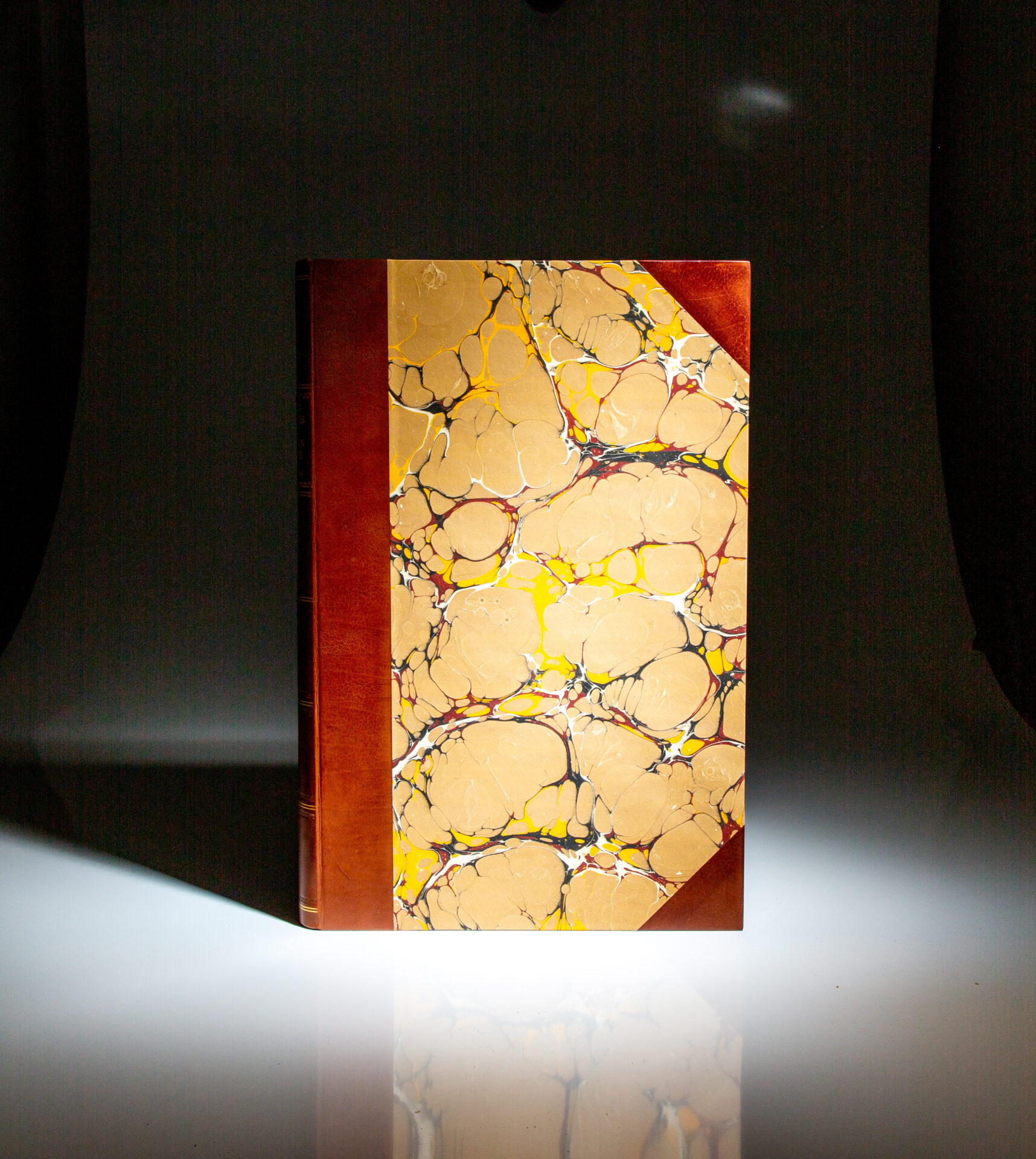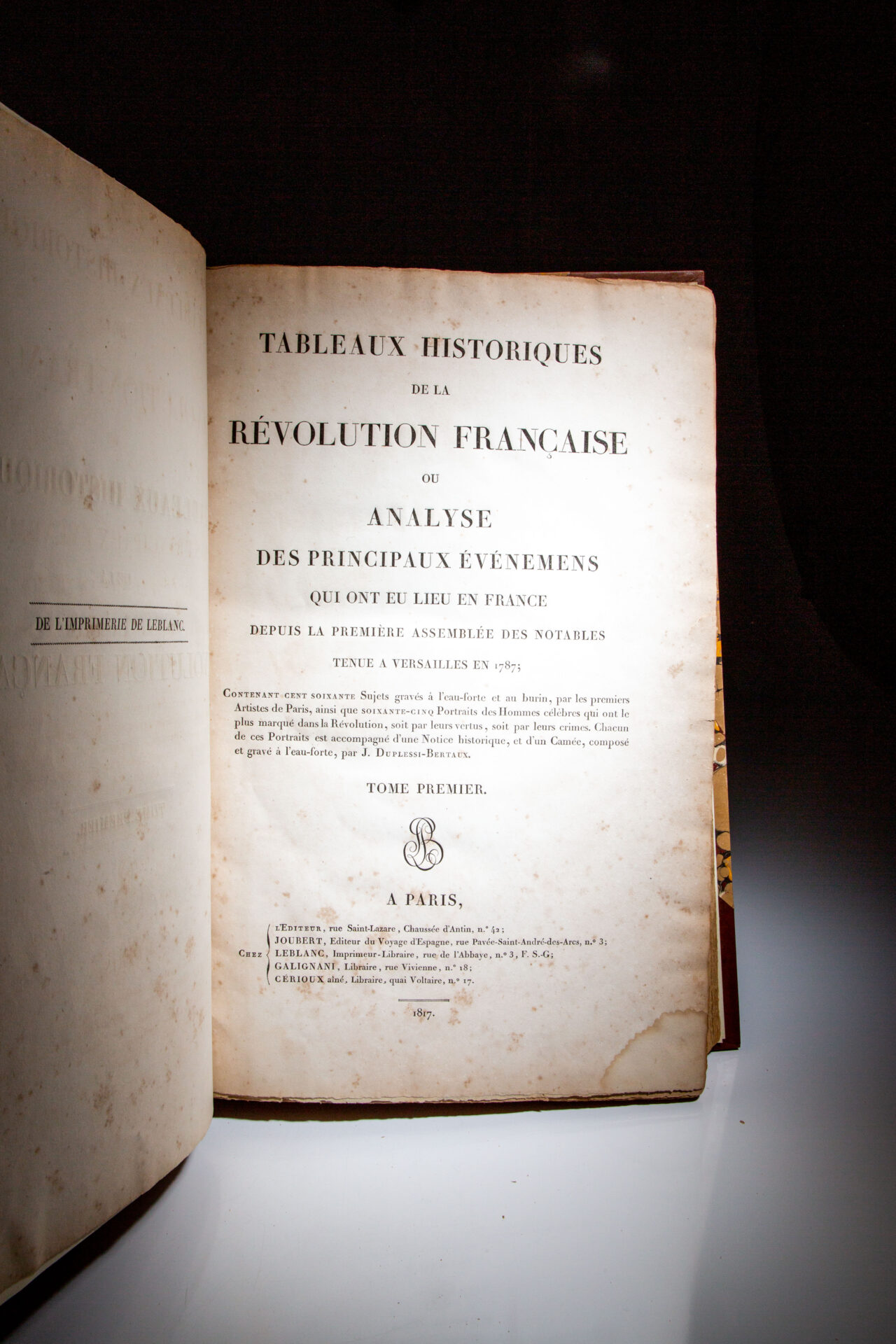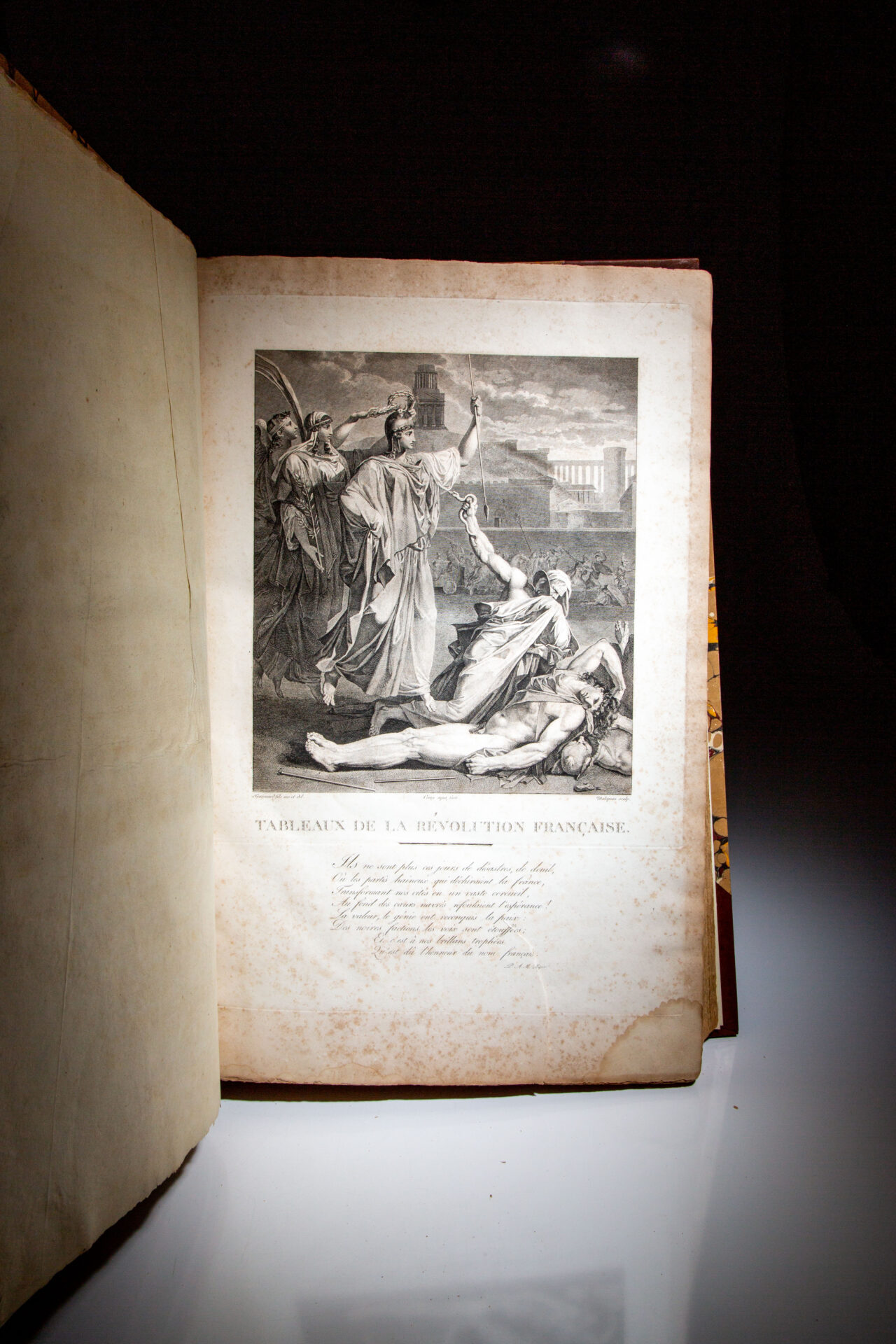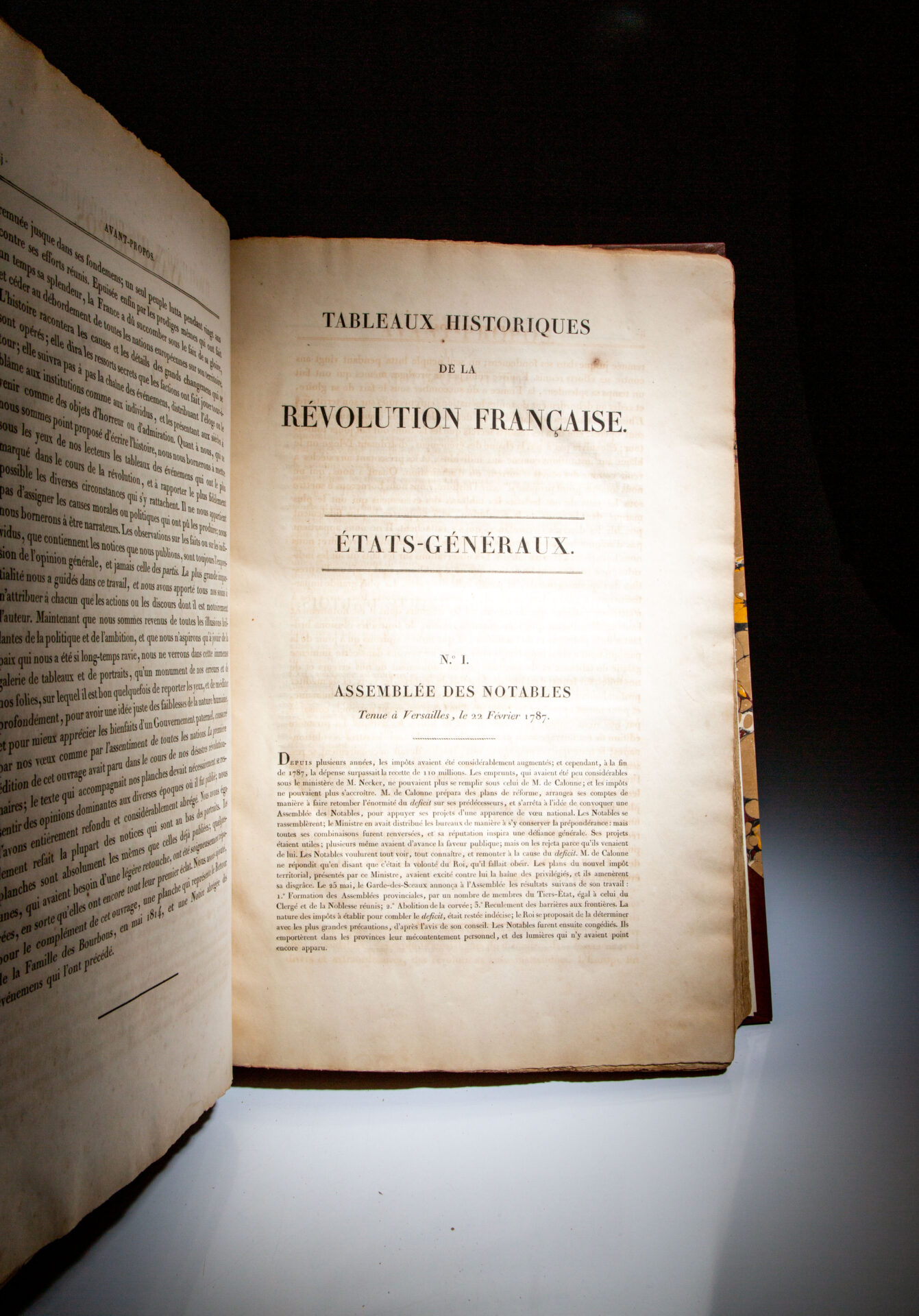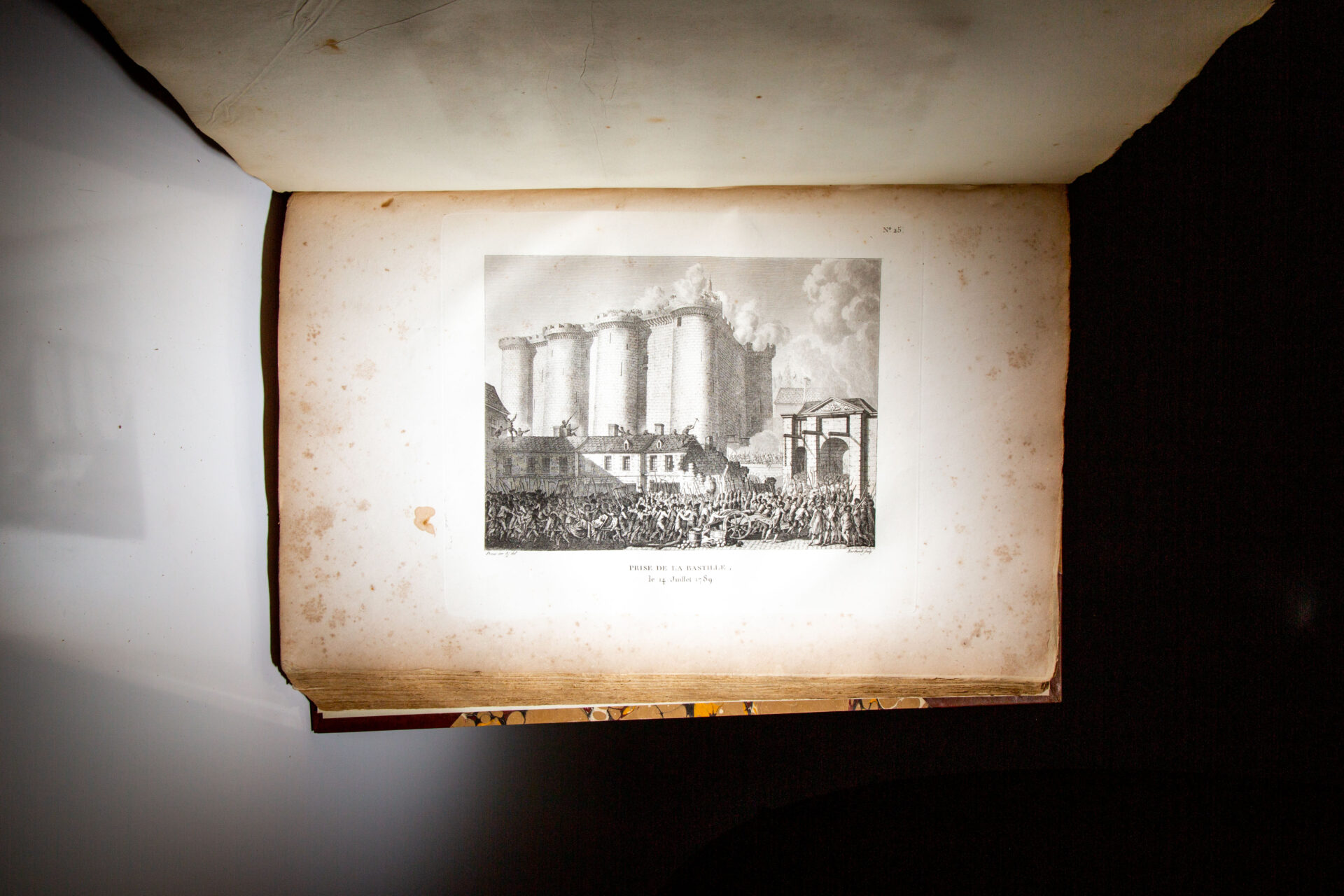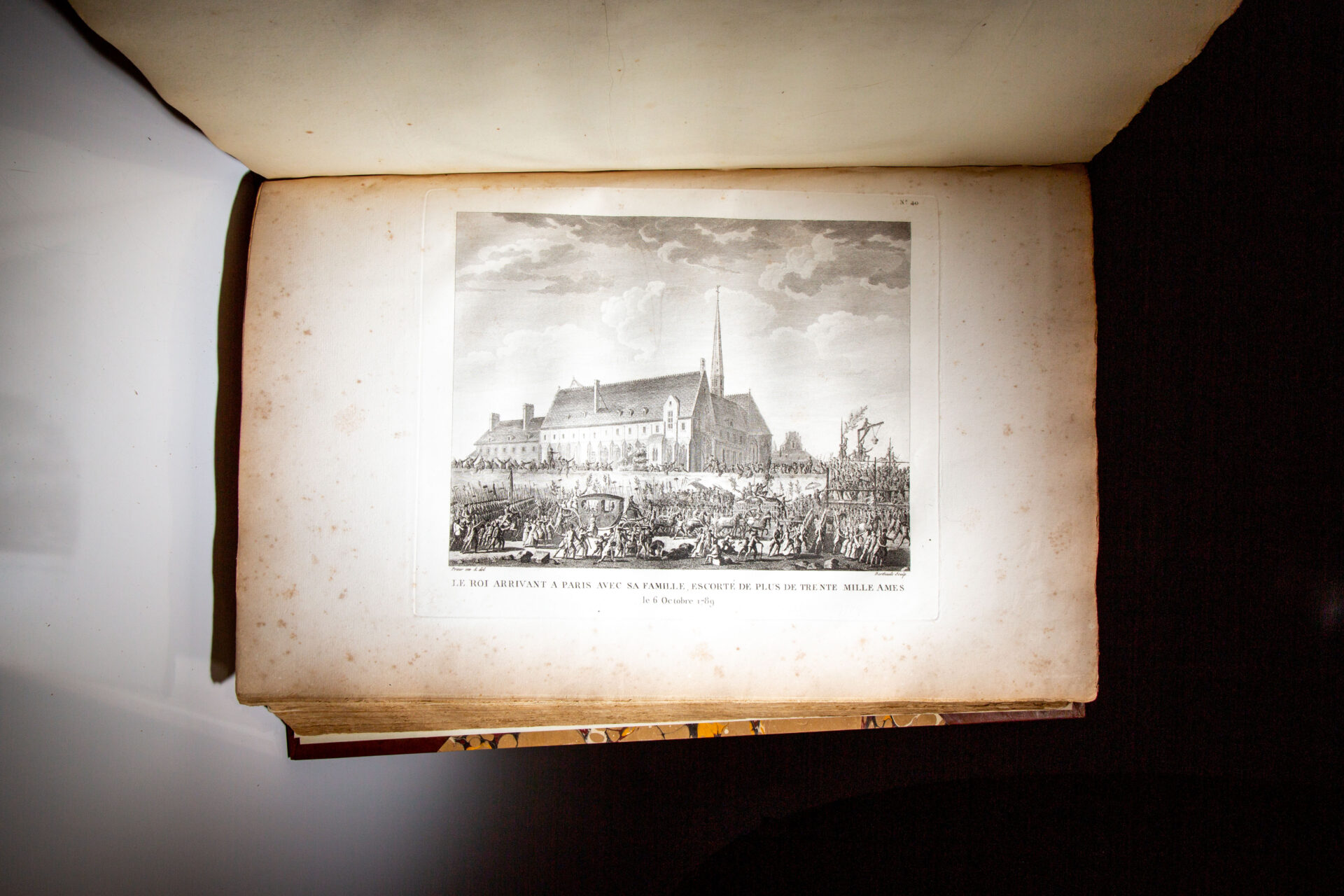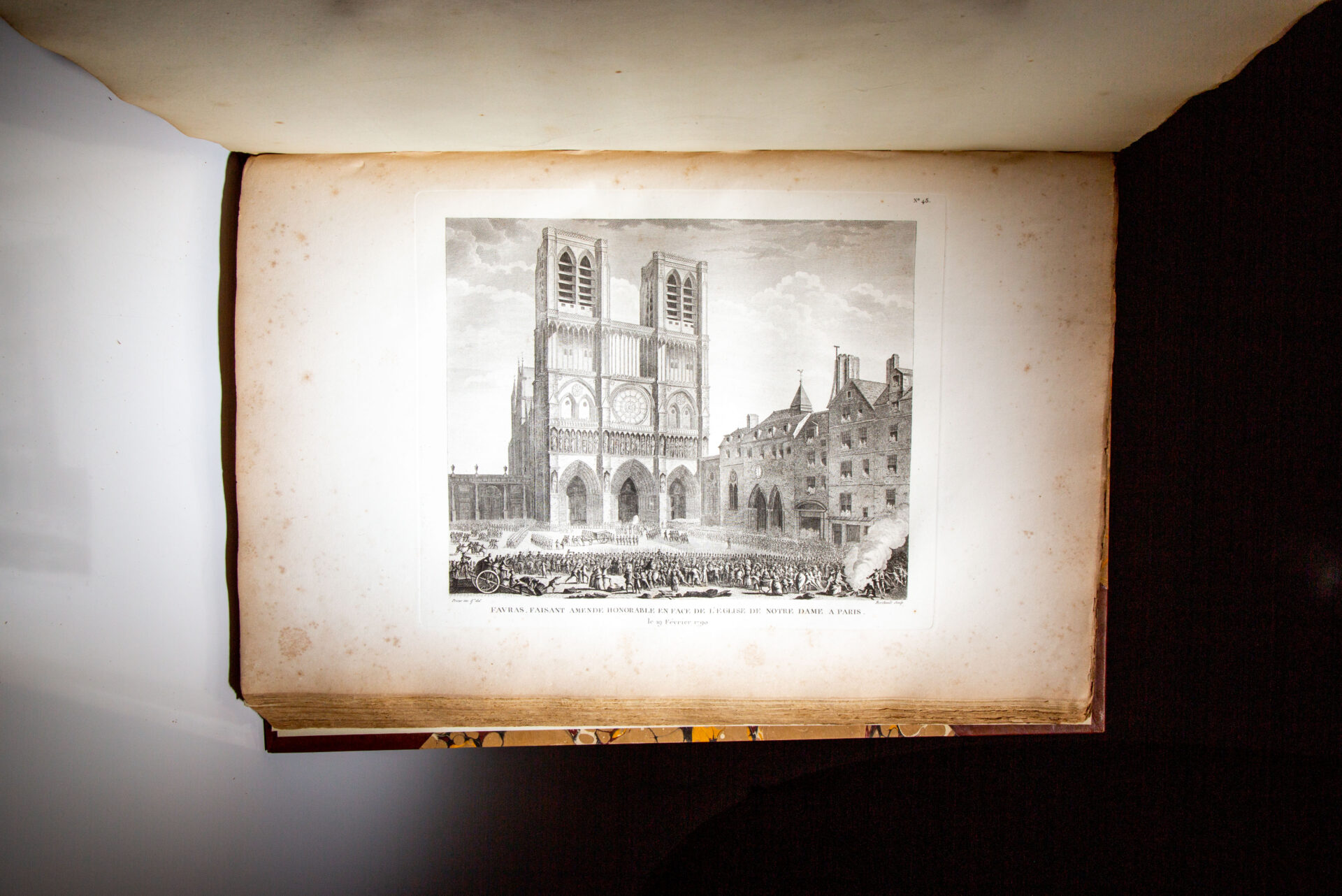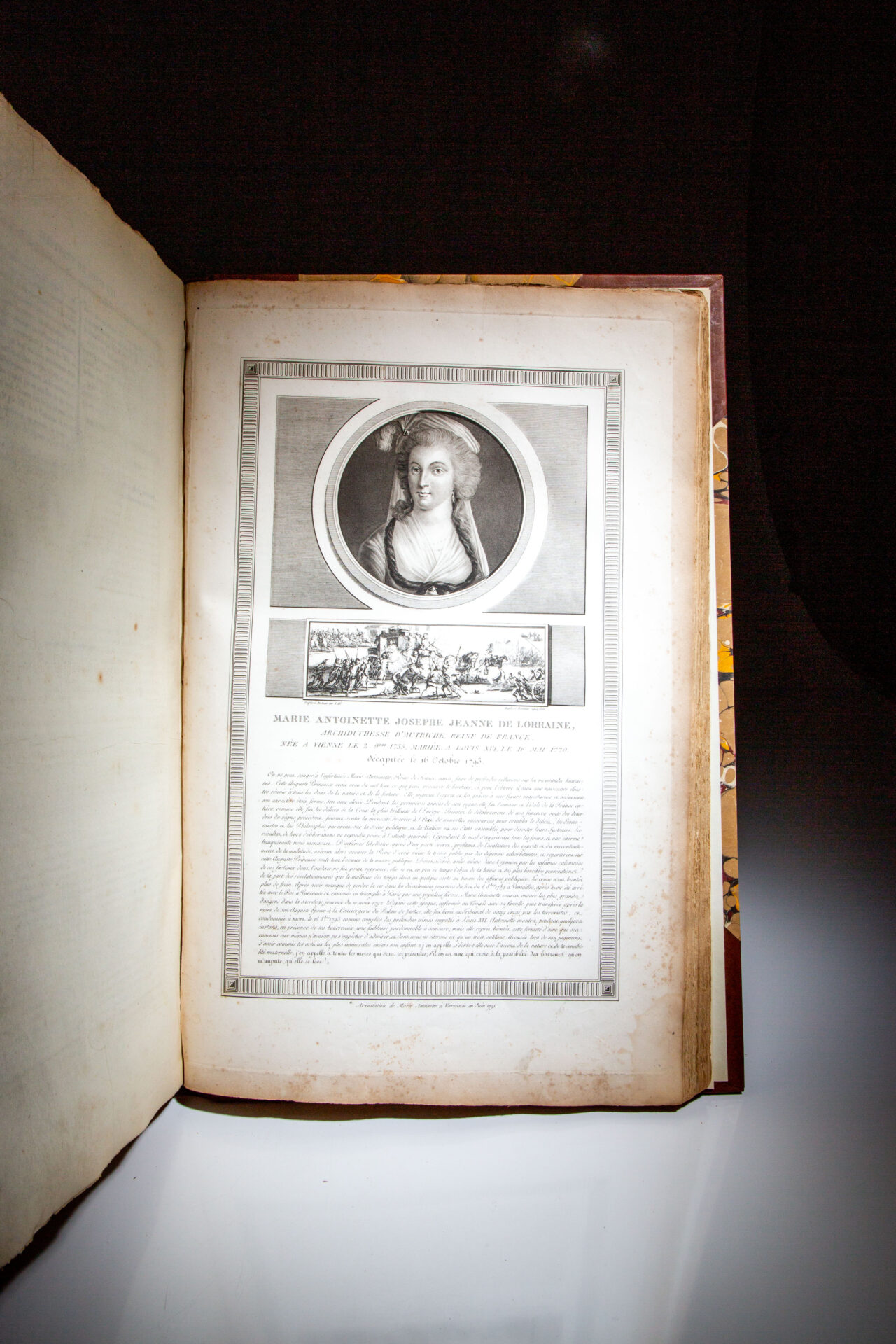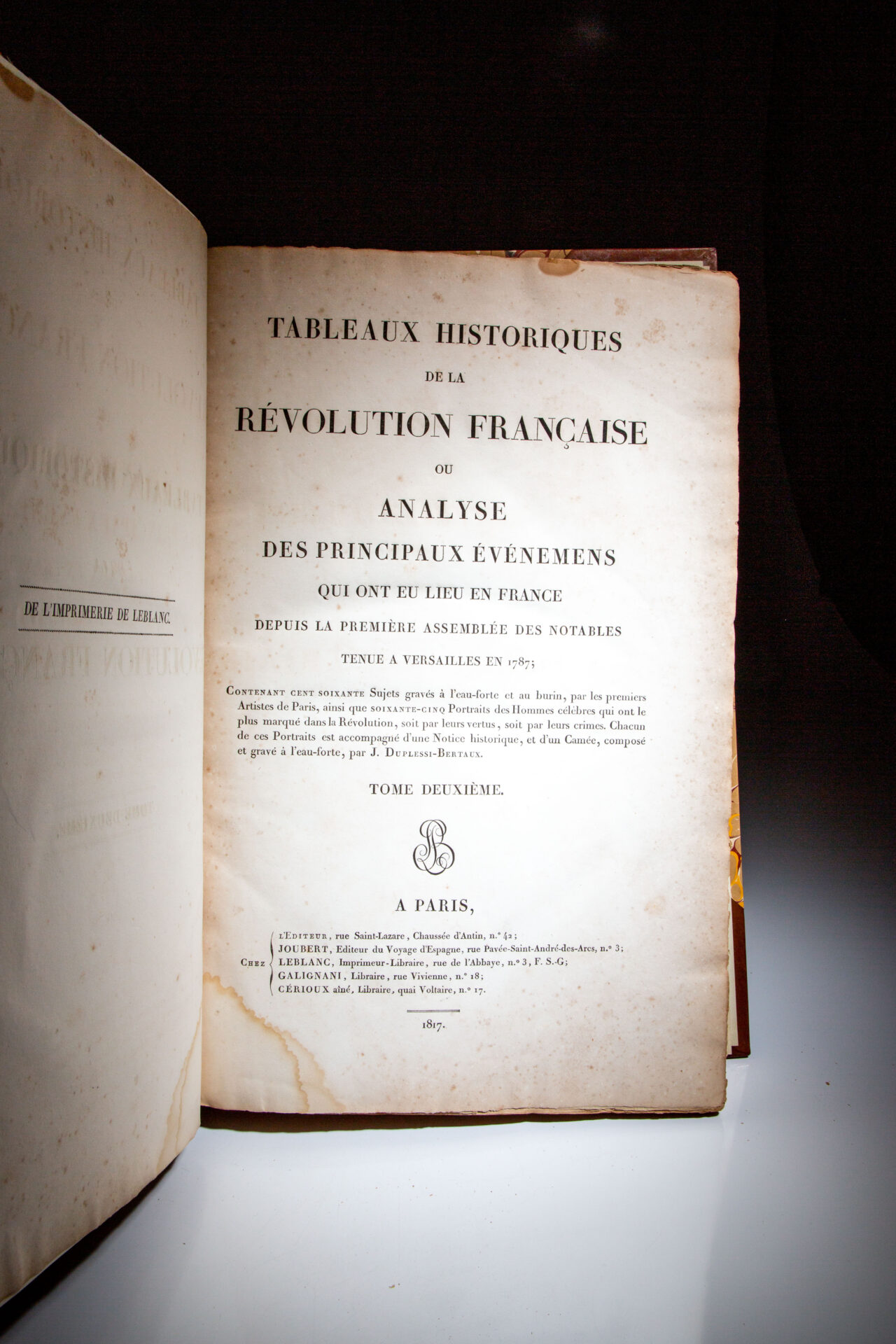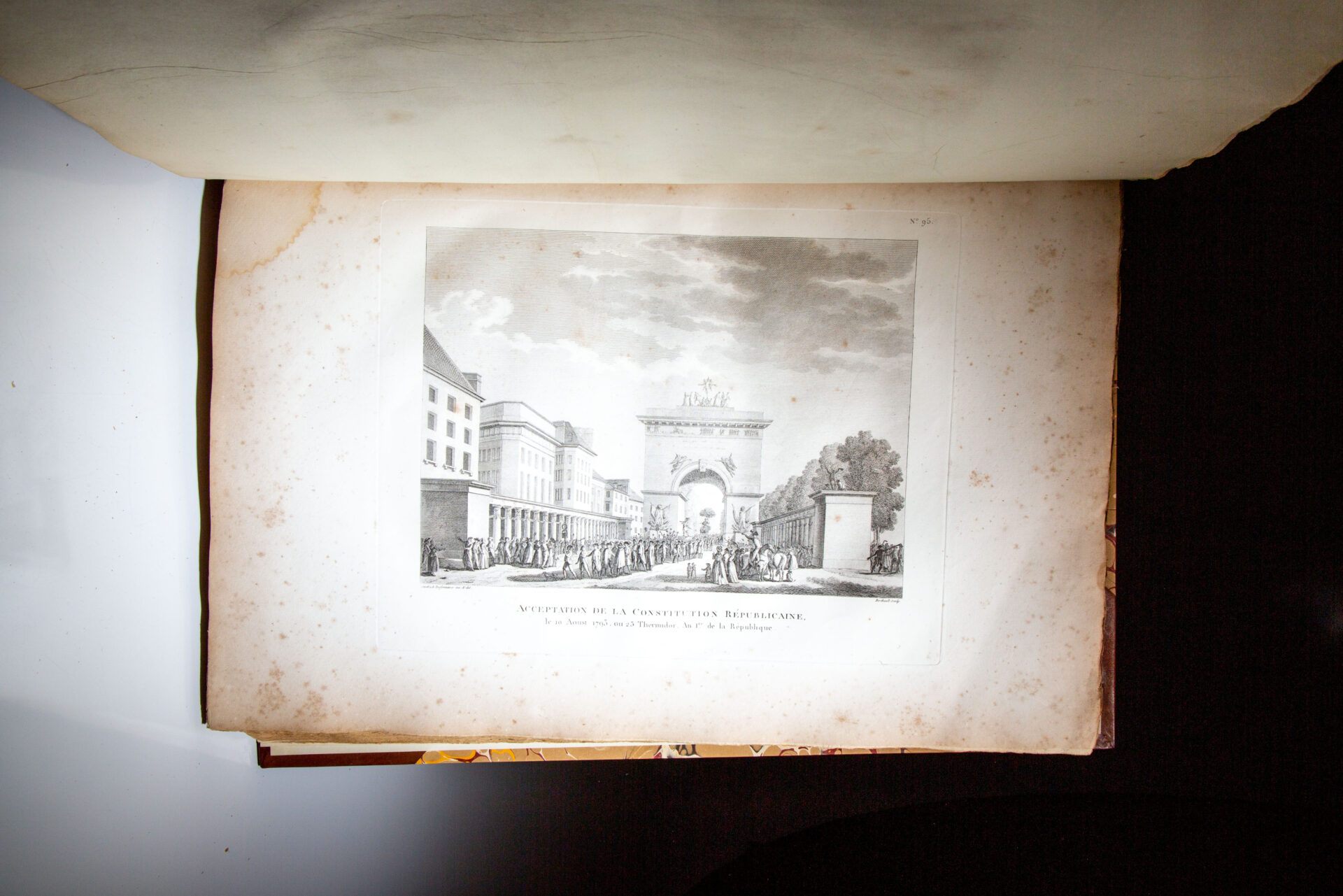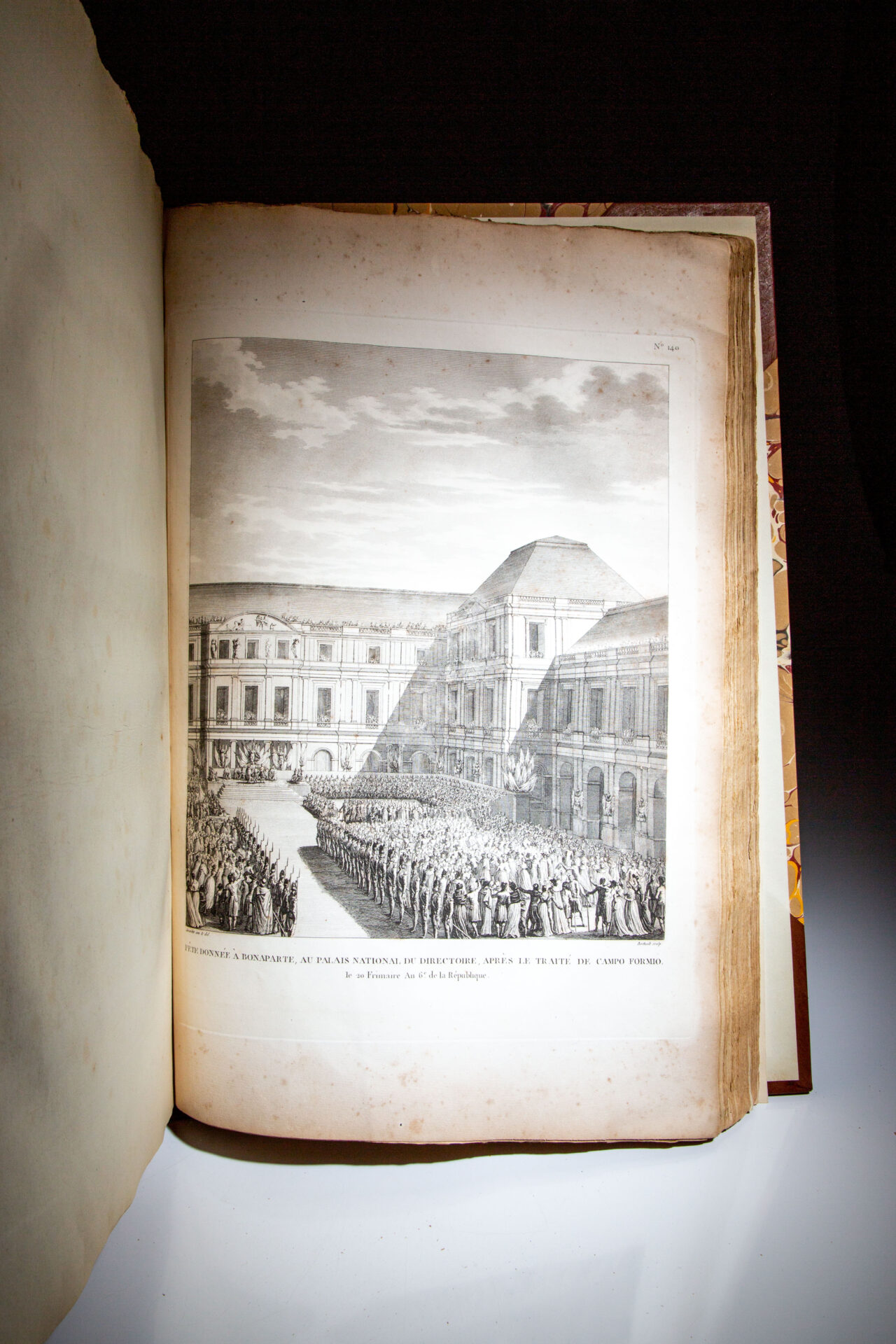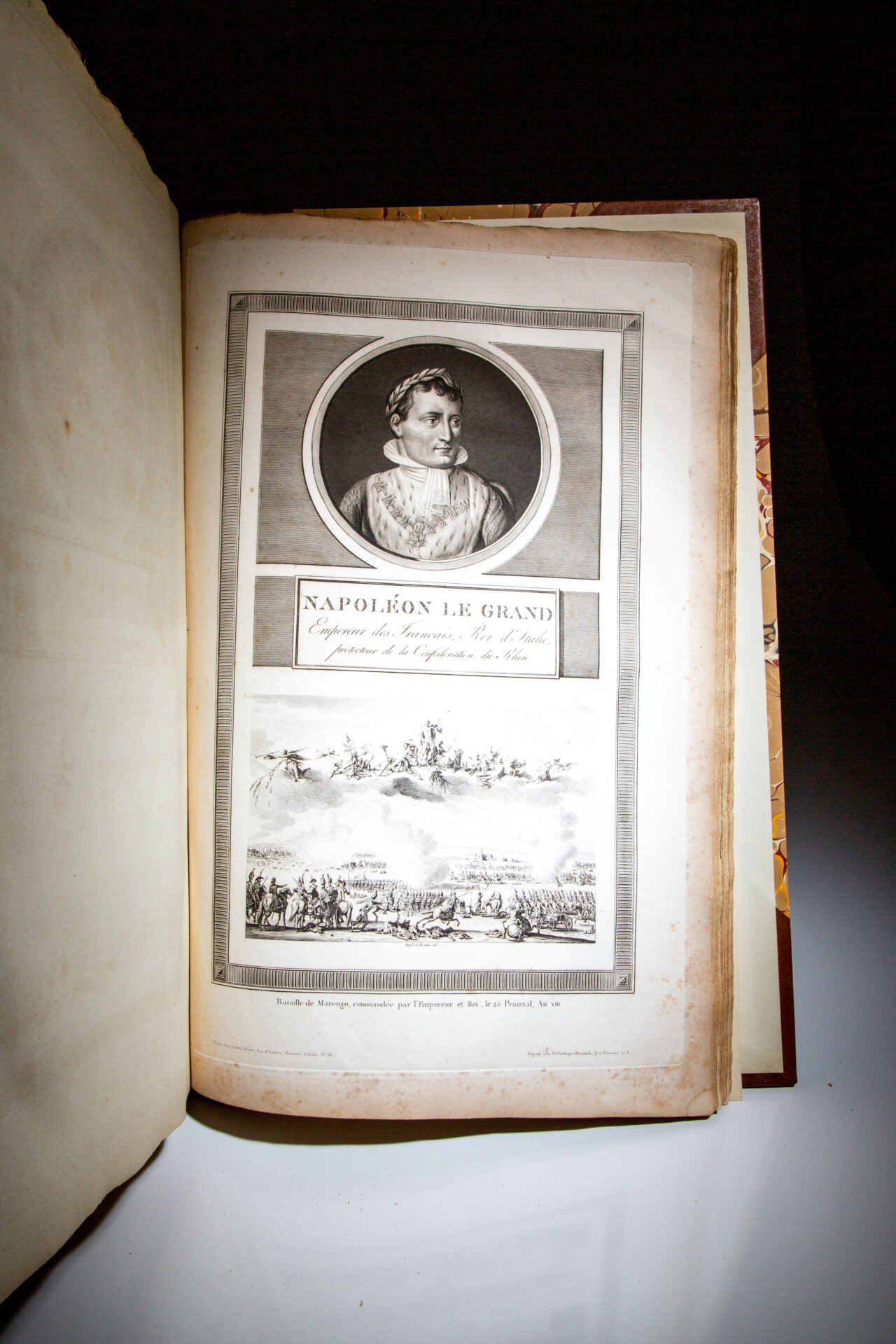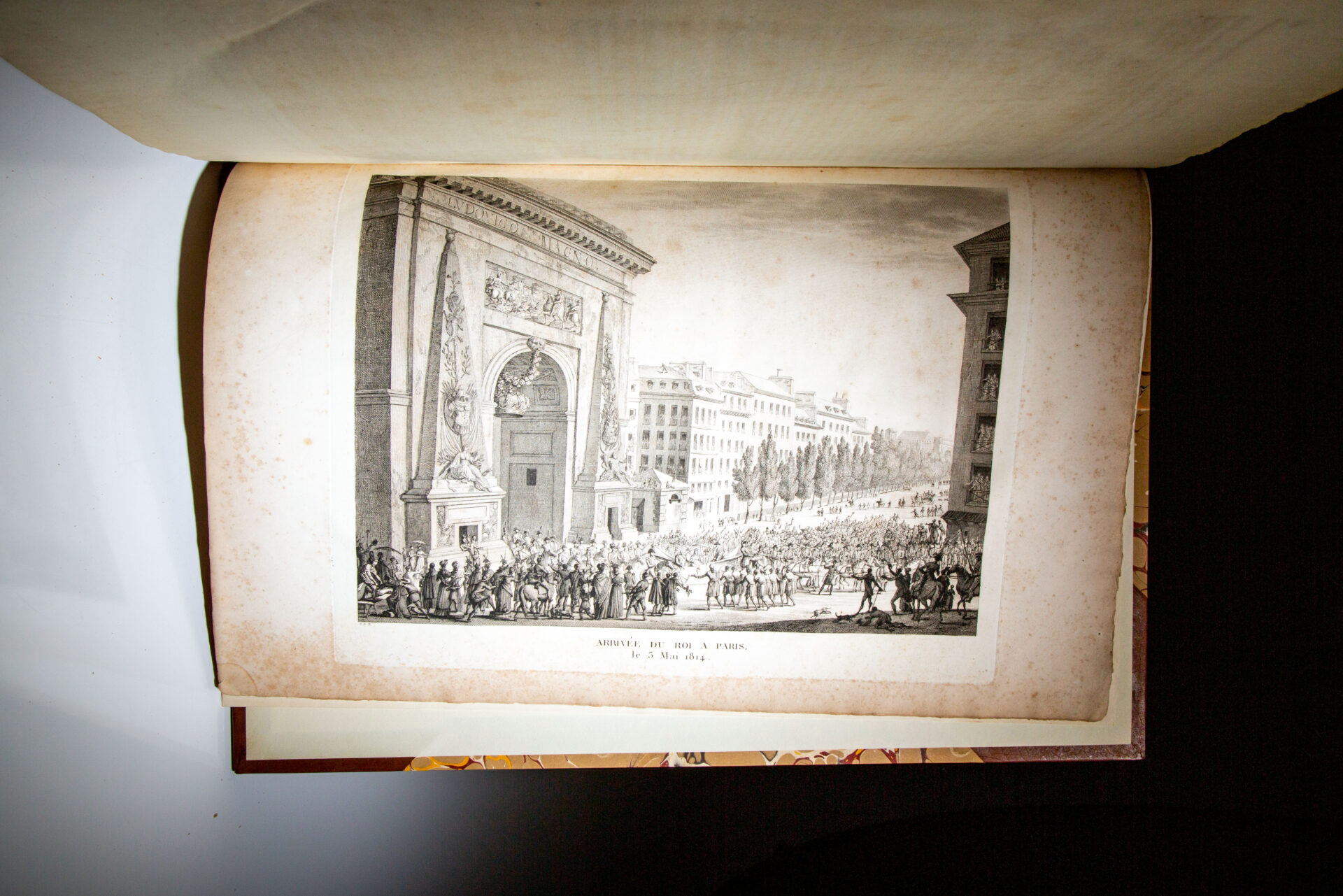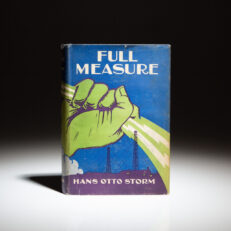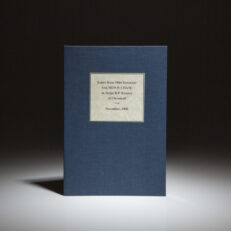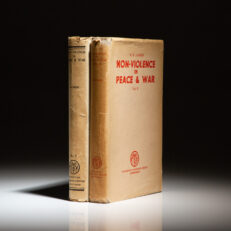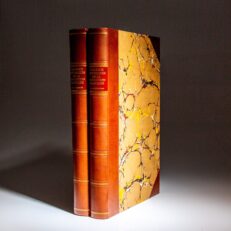Description
Tableaux Historiques de la Révolution Française, published in Paris in 1817, handsomely rebound in a three-quarter leather binding.
Folio, [two volumes], ii, 50pp, [112 plates]; [51]-104pp, [111 plates]. Modern binding of three-quarter brown leather over marbled paper-covered boards, title in gilt over red leather spine label. Spine decoratively stamped in blind with gilt ruling. Solid binding, new endpapers, hinges reinforced. Untrimmed edges. 223 full-page engravings with tissue guards, including two frontispieces, 66 portraits and 155 historical scenes. Mild toning and foxing to text pages. Moderate toning and foxing to illustrative plates. About a dozen closed tears, mostly along outside edges and not affecting text or illustrations, with the exception of the frontispiece of Volume I and the portrait of Jourdan in Volume II. Some creasing to tissue guards, with a few tears and an occasional finger mark. Intermittent marginal dampstaining, mainly along bottom edges. Brief pencil notation on page 100 of text. (Cohen-De Ricci 969-971) (Tourneux 284) (Brunet V 627) An attractive example of this important collection of engravings devoted to the French Revolution.
Tableaux Historiques de la Révolution Française was first announced to the public in 1791 and was sold by subscription over the next few years, being completed in 1796. Over the next twenty years, four more editions were published in 1798, 1802, 1804 and 1817, each with a different text. This edition, the fifth, is referred to as the royalist text. Aside from the reworking of the text, additions to the 1817 edition include Louis XVI’s will, Marie Antoinette’s last letter to Madame Elizabeth and a new plate executed by Duplessi-Bertaux illustrating King Louis XVIII’s arrival in Paris on May 3, 1814.
Full title: Tableaux Historiques de la Révolution Française; ou, Analyse des Principaux Evénemens qui Ont Eu Lieu en France depuis la Première Assemblée des Notables Tenue à Versailles en 1787; Contenant Cent Soixante Sujets gravés à l’eau-forte et au burin, par les premiers Artistes de Paris, ainsi que Soixante-Cinq Portraits des Hommes célèbres qui ont le plus marqué dans la Révolution, soit par leurs vertus, soit par leurs crimes. Chacun de ces Portraits est accompagné d’un Notice historique, et d’un Camée, composé et gravé à l’eau-forte, par J. Duplessi-Bertaux.

